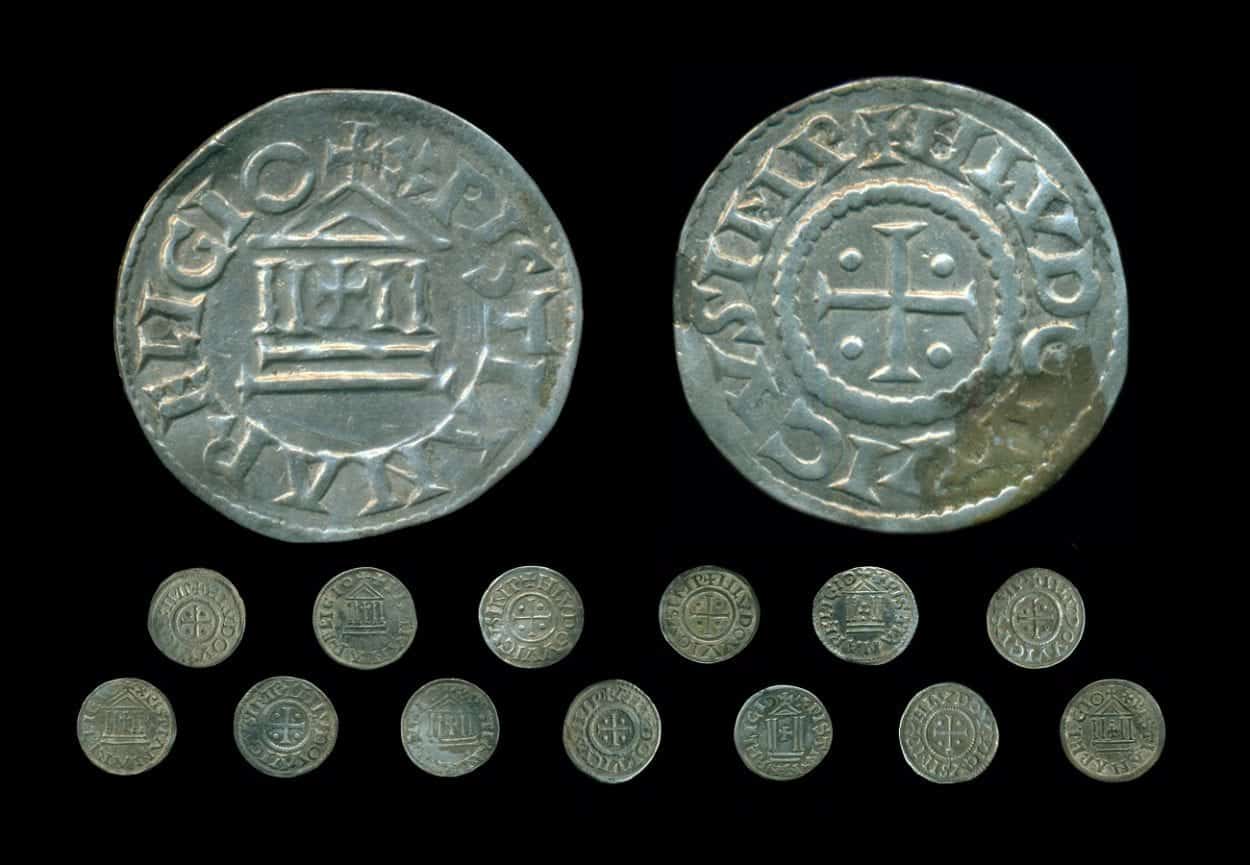Archaeologists conducting excavations near the town of Biskupiec in Poland have discovered a silver treasure hoard from the 9th century AD.
The hoard was first identified in November 2020 by members of the “Gryf” Detector Association, who notified the Monument Protection Services from the National Heritage Institute.
The hoard consists of 118 silver denarii coins and their fragments, depicting the Carolingian King/Emperors: Louis the Pious who ruled from AD 814 to 840, and Charles the Bald who ruled from AD 840 to 877.
The Carolingians were a Frankish dynasty that reached its peak in AD 800 with the crowning of Charlemagne as the Emperor of the Romans and the Carolingian Empire. With Charlemagne’s death in AD 814, the Empire began to decline and fracture, eventually leading to the evolution of the Kingdom of France and the Holy Roman Empire.
During the 9th century AD, the vicinity of Biskupiec was inhabited by Prussian tribes which mainly used Arabic coins as currency, with only a few single Carolingian coins having previously been discovered from that period.
The hoard was placed in the basin of the Osa and Drwęca Rivers, tributaries of the River Vistula that connects to the Vistula Lagoon where the major Viking settlement of Truso had emerged on the banks of the Nogat delta branch.
Łukasz Szczepański from the Museum in Ostróda said: “The Viking settlement in Truso and the related activity of the Vikings likely indicates how the treasure reached the territory of ancient Prussia. In the 9th century, we notice a clear increase in the threat posed by the Vikings taking part in the invasions of Western Europe. Paris is besieged in AD 845, and at the same time the Scandinavians are actively trading in the Baltic regions.”
The treasure will be presented to the public for the first time in the Ostróda museum in mid-May.
Header Image Credit : Muzeum w Ostródzie





